How We See Colors On the Skin Surface
Now let’s talk about something, that we can see everywhere.
Why does the same pigment put at different depths look like a different color on the skin surface?
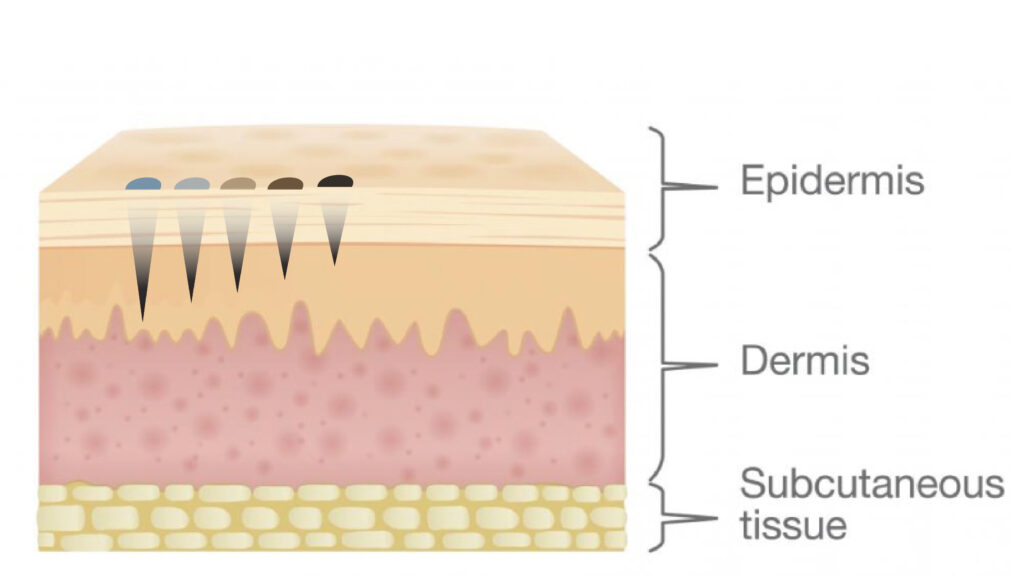
That’s why.
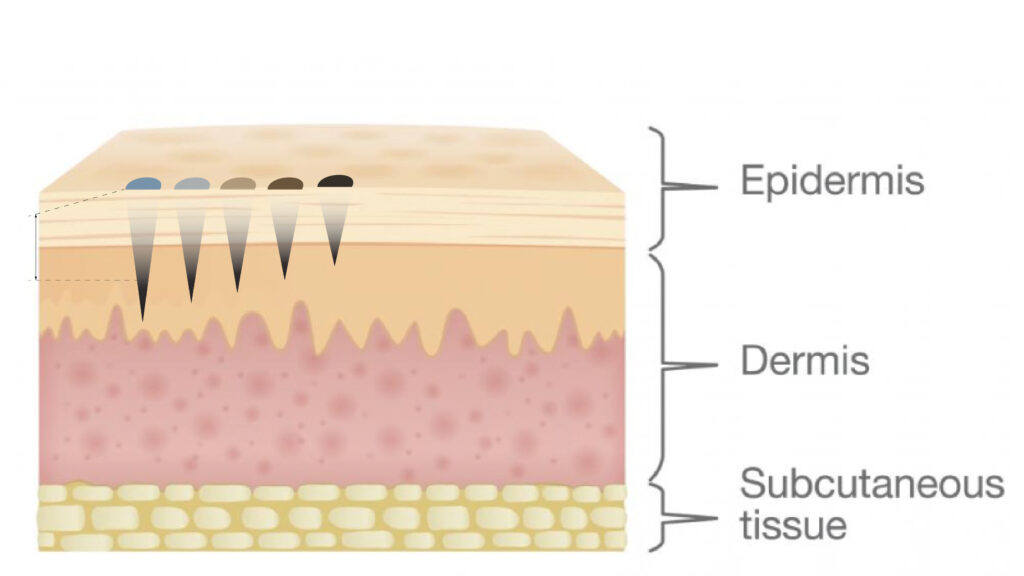
The area from the skin surface to the pigment is a completely heterogeneous medium consisting of collagen fibers, cells, hyaluronic acid, etc. The light passes through such tissues in a strange way; the deeper the pigment, the thicker the width of the transparent layer through which the pigment is visible and in such tissues the blue particles of the spectrum are reflected first.
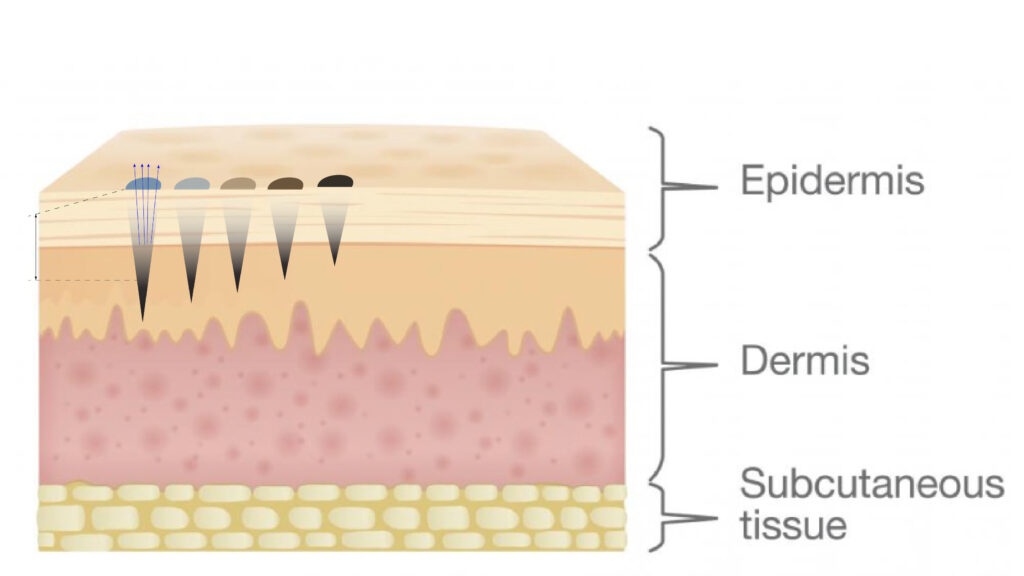
As a result, we see a reflection from the transparent layers. The color distortion occurs here, so we see blue on the surface of the skin. The higher the pigment lies, the closer the result will be to the intended color.
Now let’s see what the cover looks like. When a client comes to us with a cold color on the skin and asks us to correct or cover the old permanent makeup.
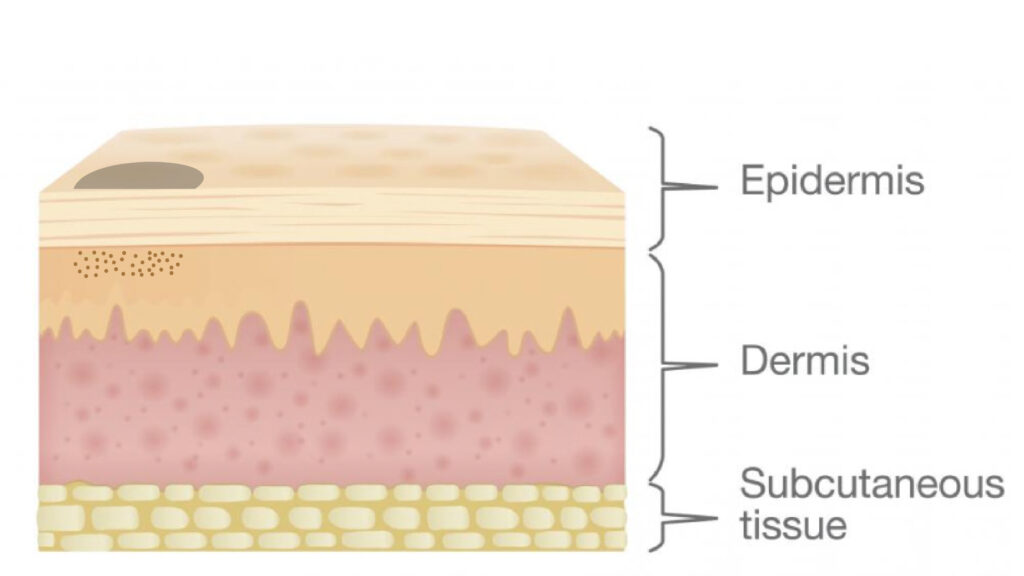
We cover it with a warm color, so, we add granules of reddish or brownish corrector to the tissues.
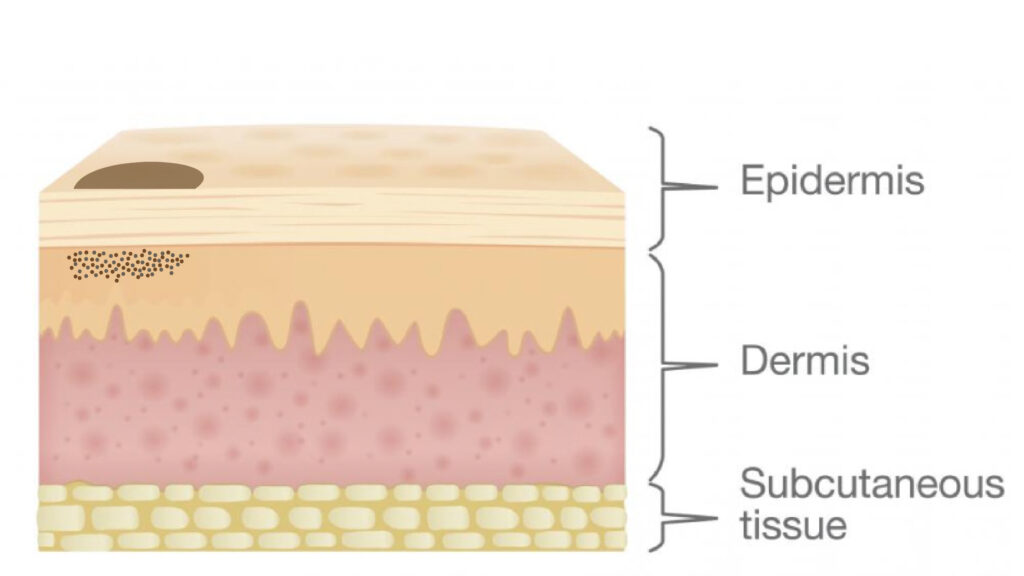
A new shade appears on the surface. They often say that, for example, after 3-4 months, a cool old color will appear. Everything happens because the new pigment may have been less stable and was attacked by macrophages, its number decreased and again the granules of the old pigment began to prevail.
So it’s better to remove the old color, to finally obtain a predictable good result.
Here is another interesting table showing how the pigment changes over time
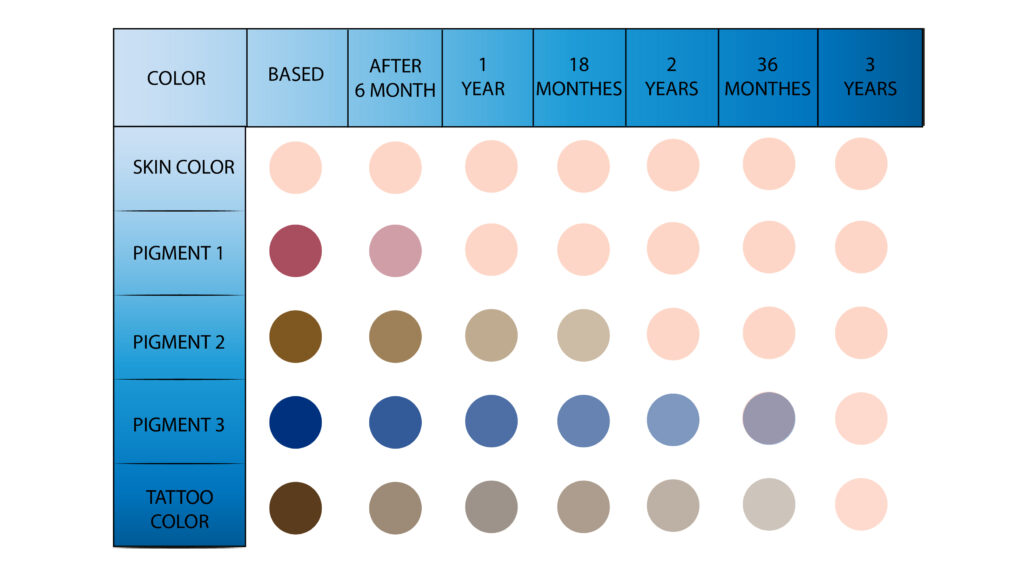
This is just theoretically and does not mean that any pigment will change the color, as all manufacturers of pigments have a different composition.
Loosely speaking pigment № 1 degraded in 1 year
Pigment № 2 in 2 years
Pigment № 3 in 3 years
The bottom column of TATTOO COLOR shows how the color on the skin surface has changed over time.
It was originally brown and then started to get cooler over time. All this happens because the degradation of the components in the pigment is uneven.
It is better not to mix pigments of different manufacturers, it can lead to unpredictable color results. If it is one manufacturer, it takes into account the rate of degradation of its pigments, so the result is likely to be more predictable.
Let’s talk about skin injury.
Let us examine two situations that you must have encountered.
- When a client has a quick healing – light crusts, peeling, the serosanguinous fluid stops after an hour or two, everything is easy and fast.
- When the crusts are kept for 10-14 days, severe swelling, the eyes do not open, you can drink only through a straw, the result is also different. When the crusts fall off there is a chance that everything will fall off with them.
So, in the first situation, there is slight damage to the skin. In these cases, usually, the pigment is put in 2-3 passes. When the number of passes on the skin surface is not very large, let’s say 2-3 passes, the injury is limited.
What does that mean? This means that between the punctures of the skin remains intact areas of the skin, in the end, healing occurs over the entire surface. This is affected by:
A good machine with a minimal lateral vibration of the needle
- Good needle (sharp, not blunt)
- The number of passes.
When all these nuances are taken into account, we get a good result when healing – good healing without scars, small peeling, thin-crust, good residue, etc.
If the pigment is not enough after 2-3 passes, it is better to let the client go home and make a correction after healing than trying to drive the pigment into the skin, as this can lead to sad consequences… to what? With severe skin injuries and a large number of passes, we turn the upper layers of the skin into almost finely ground minced meat. The epidermis and dermis are ground. All this is destroyed completely and there is no living place. The basement membrane is also completely destroyed, and all this is mixed with pigment, serosanguinous fluid, red blood cells, platelets, etc. That is one big wound. All this heals under a thick crust. In this situation, the healing will take a long time, since all the tissues are destroyed. The epidermis will try to crawl off the edges, but it will take it a long time. Since the body can not stand so much, it fills the entire defect with new connective tissue. So, the dermis is activated, it synthesizes many fibers and forms connective tissue on the surface. Then the epidermis slowly crawls off the edges and as soon as it tightens the entire wound, the crust will disappear. In fact, we get a scar on the surface in such a situation.
We encounter such situations everywhere — eyebrow scars, ground edges around lips, etc.
You need to take this into account because clients do not see this and this is normal for them, but since you are professionals, you should know this and prevent it in time.
That’s the difference between scarred skin and normal. It is necessary to compare the skin for example of the eyebrows with the skin next to them. If there is any difference, it is better to inform the client in order to avoid accusations.
This is a picture from the Internet, but I want you to see the difference.
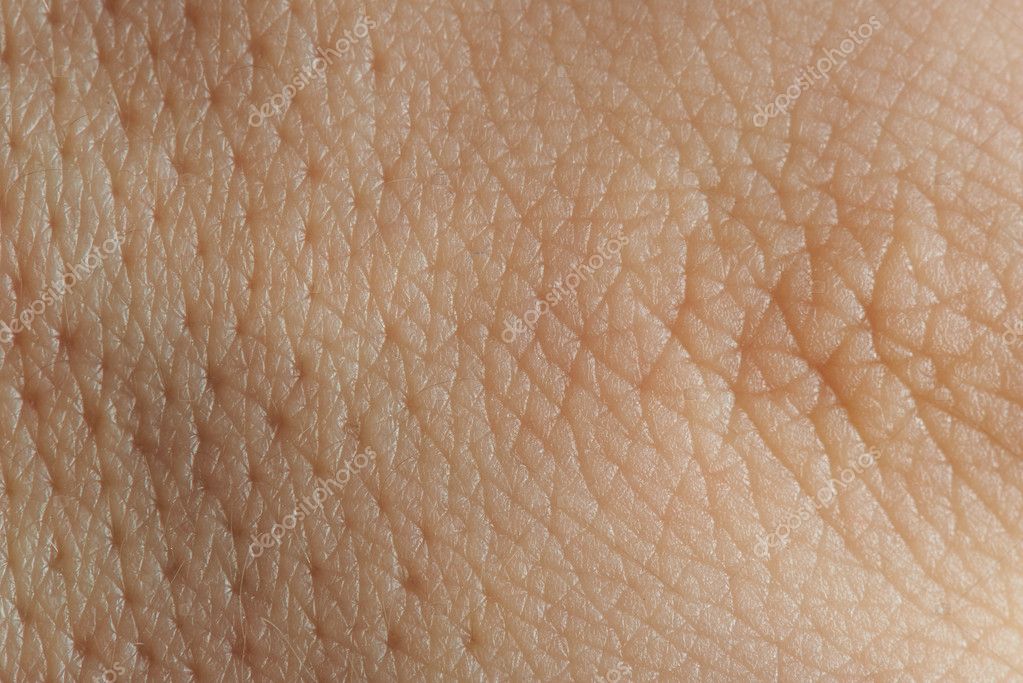
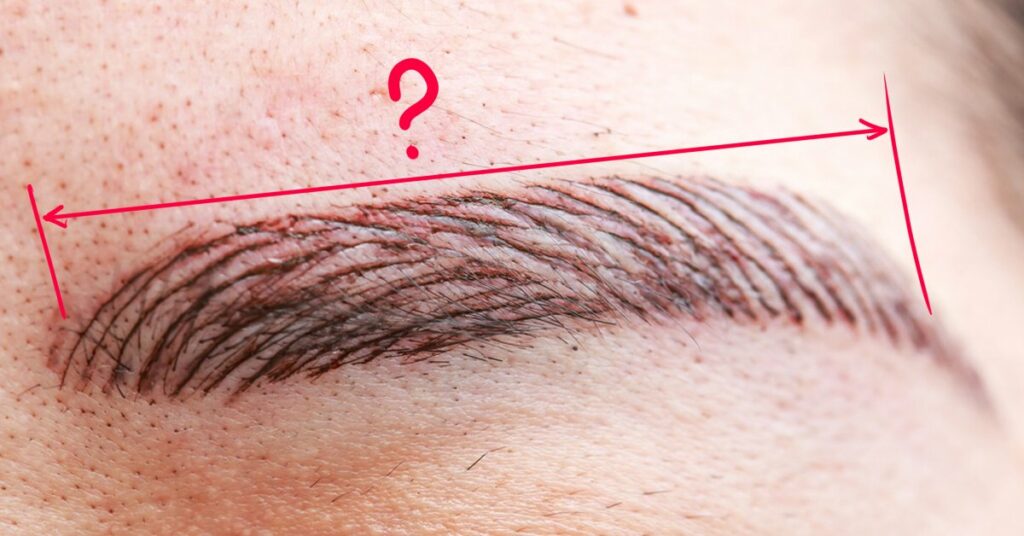
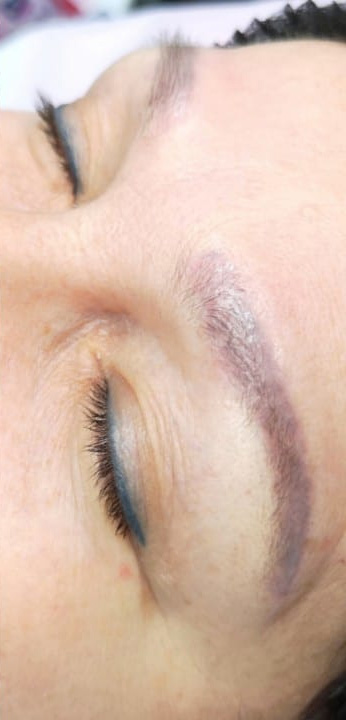
The skin looks like a stretched thin patch. These are all signs of scar tissue.
Why am I even telling you this?
You need to fix the current state of the skin before you start doing something with a laser because if you do not do it immediately, you will get a claim – I had a permanent makeup, and now I have scars. Try to prove that it was not your fault.
When a client comes for the first time, be sure to photograph the condition of his skin, as well as inform about the presence of scars on the skin. Because as soon as the pigment goes away, there will be a difference of skin texture from the skin next to it. It is necessary to explain because people do not understand and if you’d say that after 2-3 sessions of laser removal, it will look like you are talking your way out of it.
Signs of cicatrization are
- Smoothed skin pattern
- The thinned surface of the epidermis (as a stretched patch)
Let’s move on to the next lesson
